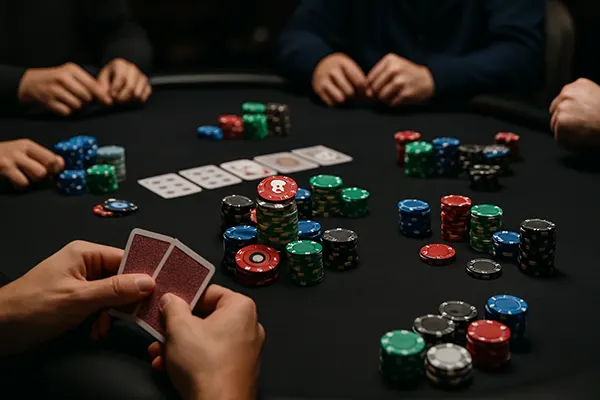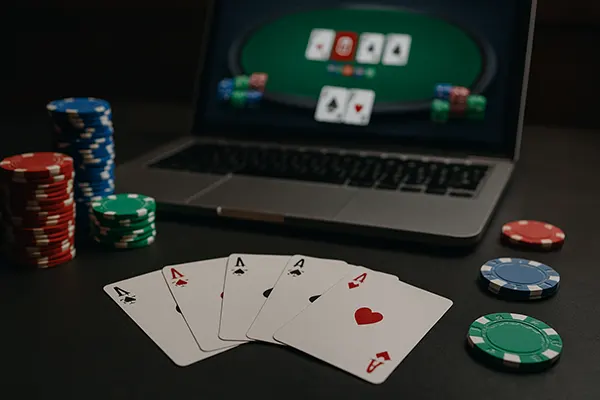
Tournament Strategy in Online Knockout (KO) Events
Knockout tournaments, or KO tournaments, have become increasingly popular in the online poker scene due to their unique prize structure. In these games, players earn a bounty by eliminating opponents, which brings an exciting dynamic to traditional tournament play. For both recreational and serious players, understanding how to adjust your strategy for these formats is key to long-term profitability and success.
Key Features of KO Tournaments
In KO tournaments, a portion of each player’s buy-in contributes to their bounty. When you eliminate another player, you receive a percentage of their bounty, and in progressive KO tournaments (PKOs), the rest gets added to your own bounty. This structure changes the incentive landscape of poker: you don’t just play for final table payouts but can also profit from early and mid-game eliminations.
What makes KO tournaments especially interesting is how they force players to shift from purely chip EV (expected value) thinking to bounty EV calculations. This adds an extra layer of complexity, particularly when calculating pot odds and equity in close-call situations. As a result, understanding when to take high-variance plays is essential.
Furthermore, KO tournaments encourage more aggressive play. Since players can gain direct value from knockouts, tight-passive strategies become less effective. Aggressive players who understand how to capitalise on weaker opponents’ bounty chasing tendencies often see much better results.
How Bounties Influence Table Dynamics
Once players recognise the value of bounties, table dynamics shift considerably. You’ll notice more loose calls, especially when short-stacked opponents are involved. This is particularly true when players have high bounties, essentially putting a “target” on their head and turning the table into a minefield of opportunistic aggression.
Skilled players adapt by selectively tightening their range when they have a high bounty and opening it slightly when facing potential knockouts. It’s all about managing risk versus reward and identifying the optimal times to push your equity edge. Failure to adapt often leads to unnecessary eliminations or missed value spots.
Another critical point is that the presence of a bounty changes how players perceive your actions. A shove from a player with a small bounty may look weak, while the same move from someone with a large bounty might be called far more frequently. This calls for careful image management and table awareness.
Best Practices for Early and Mid-Stage Play
In the early stages of a KO tournament, your main focus should be on chip accumulation without sacrificing your stack for marginal bounty chances. While the bounties are tempting, busting out early means forfeiting your shot at the main prize pool and deeper bounties later in the game. Patience and position awareness are paramount here.
Position remains critical in KO tournaments just as in regular MTTs, but now you must also factor in who has the largest bounties. Being on the left of an aggressive player with a high bounty can provide unique opportunities to trap or counter their plays. Use your position not just for pot control but to control bounty chases too.
Mid-stage play is where KO tournaments start diverging heavily from standard formats. As stacks shallow and more players are at risk of elimination, bounty equity becomes a stronger consideration in your decision-making. Marginal spots that would be folds in standard MTTs may now become profitable calls due to the additional value of a bounty.
Utilising ICM and Bounty Calculators
Independent Chip Model (ICM) remains vital in final table scenarios, but in KO formats, it must be combined with bounty calculations to make accurate decisions. Many experienced players rely on third-party tools and bounty calculators to determine whether a call is +EV when considering both chip value and bounty equity.
These tools become especially useful in spots where the numbers are close, and emotional decisions can lead to long-term EV loss. For players without access to advanced calculators during play, learning rough bounty value approximations is a must. Knowing, for example, that a 10-dollar bounty is worth risking 3 big blinds is an edge.
However, it’s not just about maths. You also need to weigh your opponent’s tendencies, your table image, and stack dynamics. KO tournaments reward intuitive yet data-informed play. Mastering this balance separates break-even grinders from consistent winners in the KO format.

Endgame and Final Table Strategy
In the late stages, the remaining bounties represent significant value. Your decision-making should revolve around final table ICM pressure and bounty worth. It’s common to see players either overvalue bounties or become overly cautious to ladder up. The key is identifying situations where aggression leads to exponential gains.
If you’re short-stacked with a decent bounty, expect more action against you. This gives you leverage—by shoving strategically, you can punish wider calling ranges. Conversely, if you’re chip leading, use your stack to apply pressure on middle stacks who fear busting before securing additional payouts.
ICM pressure is real in KO finals, but unique to this format, it’s often counterbalanced by the bounty value still in play. Understanding how to adjust your play to maximise both chip and bounty EV is crucial. Final tables are where mistakes are the most expensive, but also where calculated risks can pay off big time.
Bankroll Management and Volume Considerations
Because of the variance in KO tournaments—especially in progressive formats—proper bankroll management is critical. Even solid players will experience long stretches without deep runs, so having at least 100 buy-ins for your average stake is recommended if playing these formats consistently.
Another tip is to mix standard MTTs with KO tournaments to smooth variance. The KO format, while exciting and potentially more profitable due to bounties, is also more volatile by nature. Diversifying your schedule helps maintain both emotional and financial stability over the long term.
Finally, volume is your ally. As with all forms of tournament poker, edge becomes clearer over hundreds or thousands of games. The more you play and study, the better your instincts will become for spotting profitable KO spots. Regular reviews of your hands, especially marginal bounty spots, are key to steady growth.
